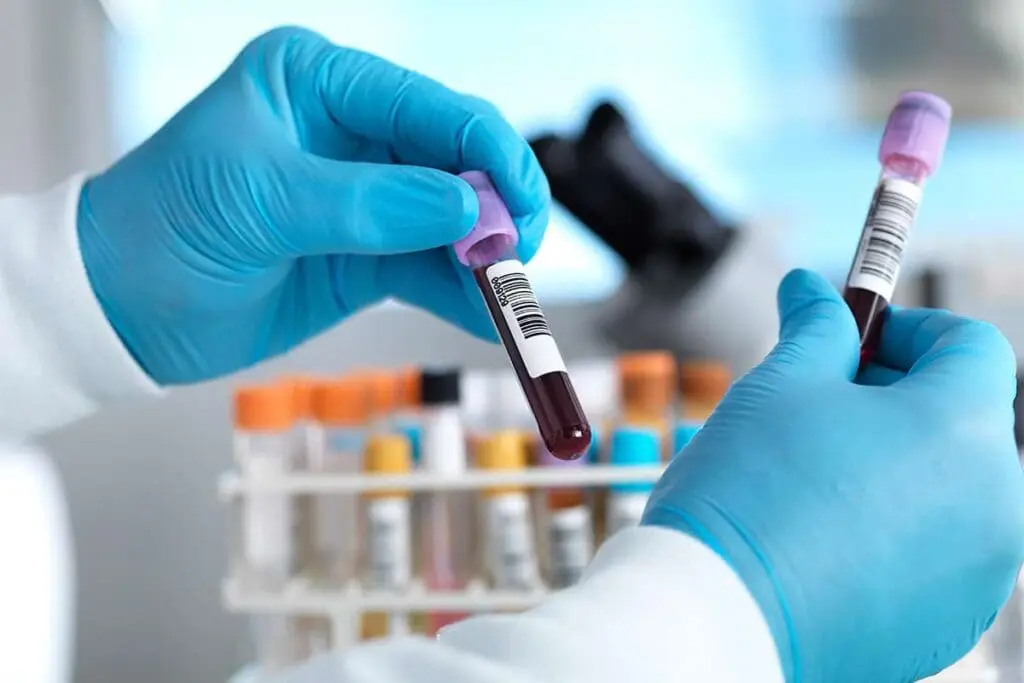Employers often ask: “What is a drug screen vs drug test?” Although the two terms are used interchangeably, each method has distinct differences. A drug test is usually more comprehensive than drug screening, but drug screening is more cost-effective and provides quicker results.
In this blog, we will explore the difference between drug screens and testing, the various types of screens and tests available, the specific drugs that can be detected, and the legal and workplace ramifications of drug tests and screening.
Table of Contents
What is a Drug Screen?

A drug screen is a fast and cost-effective approach to detecting an employee or job candidate’s substance use. However, the results of drug screening are not always 100% accurate and are susceptible to false-positives and false-negatives.
Drug screening is often used in situations where rapid results are needed. For example, employers may require a prospective employee to undergo a drug screen before employment, a process known as pre-employment drug screening. Additionally, drug screening is useful when employers conduct random screenings if they suspect an employee may be using substances that could impact their work performance.
Drug screening usually involves a 5-panel urine or saliva test and can detect substances such as cocaine, opioids, THC (cannabis and cannabinoids), phencyclidine (PCP), and amphetamines.
What is a Drug Test?
Due to its accuracy, drug testing is the most reliable method for detecting employee substance use. As a result, most employers prefer drug testing over other forms of screening.
A drug test may be necessary when an employer needs accurate results as soon as possible. For example, if an employer suspects an employee is abusing drugs, a drug test can reduce the risk of wrongful termination.
A drug test is also suited to industries where testing is regulated, such as the Department of Transportation (DOT) drug tests for commercial vehicle drivers and workers in safety-sensitive positions, such as flight crew, air traffic control, operators of commercial vessels, and train drivers.
Several drug testing methods are available, including a 10-panel urine, blood, hair follicle, and saliva tests.
Key Differences Between Drug Screening and Drug Testing
Drug screening and drug testing differ in terms of methodology, accuracy, cost, and time required for results.
- Methodology: Drug screening is usually performed with a rapid 5-panel urine or saliva test, whereas drug testing methods include the more comprehensive 10-panel urine, blood, or hair follicle tests.
- Accuracy: It’s important to note that drug screening can sometimes produce inaccurate results, either showing a false positive or a false negative. Therefore, a second confirmatory test is often needed to ensure the accuracy of the result. False positives can be caused by over-the-counter medications, certain foods, and laboratory errors. When it comes to detecting substance use, drug testing is a more reliable option. For example, a 10-panel urine test can detect a wider range of drugs, a blood drug test is more accurate and specific than a 5-panel urine test, and a hair follicle test can detect drugs and their metabolites in the hair for up to 90 days as it grows.
- Cost: Employers often use drug screening methods because they are low-cost. Blood and hair follicle tests have a higher price tag but are valued for accuracy.
- Time required for results: Drug screening results can be obtained within minutes or up to 48 hours. More comprehensive drug testing can take several days and require laboratory analysis.
Types of Drug Screens and Tests
Several methods can be used for drug screens and tests, including urine, blood, hair, and saliva tests. Each is applicable in certain scenarios. For example, a urine or saliva test is a convenient drug screen for pre-employment situations and to detect common drugs such as cannabis in a matter of minutes. Hair follicle testing can detect repeated drug use as far back as 90 days.
Urine Drug Screens and Tests
Urine drug screening and testing is the most commonly used method for drug screening because it is convenient, painless, and cost-effective. Results are typically available within a few days, sometimes even on the same day. The most common drug screening method is the 5-panel urine drug screen. Employers can also order a 10-panel urine drug test, which is more comprehensive and is preferred in regulated industries.
Blood Drug Screens and Tests
Blood tests offer high accuracy and can detect illicit substances within minutes or hours of use. They also detect the amount and type of drug in an employee’s system, which can help employers determine the level of impairment on the job. Nevertheless, they tend to be expensive and inconvenient.
Common Substances Detected

Common substances that both drug screens and tests can detect include:
- Amphetamines
- THC (cannabis, cannabinoids)
- Cocaine
- Opioids
- Phencyclidine (PCP)
More comprehensive drug testing, such as the 10-panel urine drug test, can detect:
- Amphetamines
- THC (cannabis, cannabinoids)
- Cocaine
- Opioids
- Phencyclidine (PCP)
- Barbiturates
- Benzodiazepines
- Methaqualone
- Methadone
- Propoxyphene
Blood drug tests expand on the drugs tested by a urine test to include ethyl alcohol, fentanyl, oxycodone, buprenorphine, meperidine, tramadol, gabapentin, and carisoprodol.
Hair follicle tests can also provide an expanded opiate panel and detect oxycodone, oxymorphone, hydrocodone, and hydromorphone.
Detection Windows
The detection window for different substances varies based on the types of tests and screens:
- Urine drug screen: Drugs in urine are typically detectable for one to seven days.
- Saliva drug screen: Saliva testing detects drug use in the prior 48 hours.
- Blood drug test: Since the body metabolizes and eliminates drugs relatively quickly, blood tests have the shortest detection window – just minutes or hours.
- Hair follicle drug test: Drugs in the hair follicle can be detected for up to 90 days.
Accuracy and Confirmatory Tests
Because drug screening isn’t 100% accurate, a confirmatory test can be used to rule out possible false-positive results.
A confirmatory test is a second drug test performed if drugs were detected during the initial drug screening. It is used to verify the results of the initial drug screen.
Confirmatory drug tests take longer than drug screens as they can detect specific drugs and their metabolites, not just the drug class.
False Positives and Negatives
Although drug screens and tests are usually accurate, false-positives are possible. Generally, urine drug screening and tests are more prone to false positives than blood and hair follicle tests. These false-positives can be caused by a high metabolism, drug half-life, certain foods, drug dosage, and frequency of drug use.
On the other hand, a false-negative occurs when a person is using substances, but the drug or metabolite is present in low levels and is not detected.
More comprehensive drug testing, such as a 10-panel urine test, blood test, or hair follicle test, can mitigate false-positive and false-negative results. Confirmatory testing should also be used to achieve an accurate result.
Legal and Workplace Implications

In most states, employers are allowed to test job applicants for drugs or alcohol, but the legality of testing varies by state. The employer typically sets specific guidelines and protocols for these tests in compliance with state employment regulations.
Note: Industries regulated by the Department of Labor and Department of Transportation are required by law to test job candidates for drugs and alcohol.
Employers should follow these best practices when conducting pre-employment blood tests to ensure legal and fair procedures:
- Inform job applicants about the inclusion of drug or alcohol testing in the interview process.
- Blood tests should be conducted by a state-certified lab and reviewed by a Medical Review Officer (MRO).
- Equal opportunity laws and the Americans with Disabilities Act (ADA) mandate that all applicants for the same position must undergo the same type of drug test.
- Employers must handle employee health information confidentially in accordance with HIPAA and the Americans with Disabilities Act (ADA). All applicant information, including personally identifiable information (PII), protected health information (PHI), and test results, should remain confidential. Drug test results should only be shared on a need-to-know basis with the relevant department.
Preparing for a Drug Screen or Test
To prepare for a drug screen or test, individuals should take the following steps:
- Inform the tester or healthcare provider about any over-the-counter or prescription medications and supplements. This will help ensure that potential false positives are documented beforehand.
- For urine drug tests, examinees should refrain from drinking excessive amounts of water before the exam. If the urine is too diluted, the test may not be performed and another test will be rescheduled.
Conclusion: Drug Screen vs Drug Test – Making the Right Choice
There are distinct differences between a drug screen vs drug test. Collection methods, drugs detected, detection windows, accuracy, and cost all come into play. Choosing the right method based on the situation is, therefore, critical.
If you want to begin or optimize your drug screening and testing program, look no further than the experts at Acuity. We provide comprehensive drug and alcohol screening and testing services for all organizations and industries, including companies that must comply with Department of Transportation drug screening regulations. We can help you maintain workplace safety and ensure compliance with applicable state or federal regulations.
Our services are available whenever and wherever they are needed, 24/7.
Contact Acuity today to learn more.
